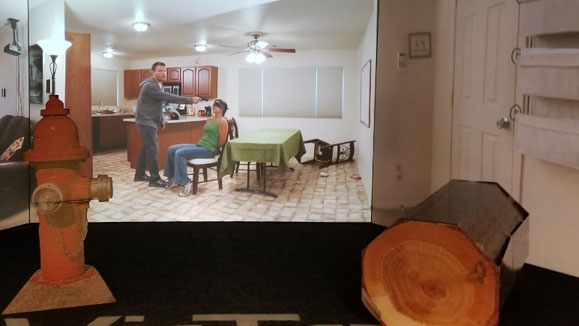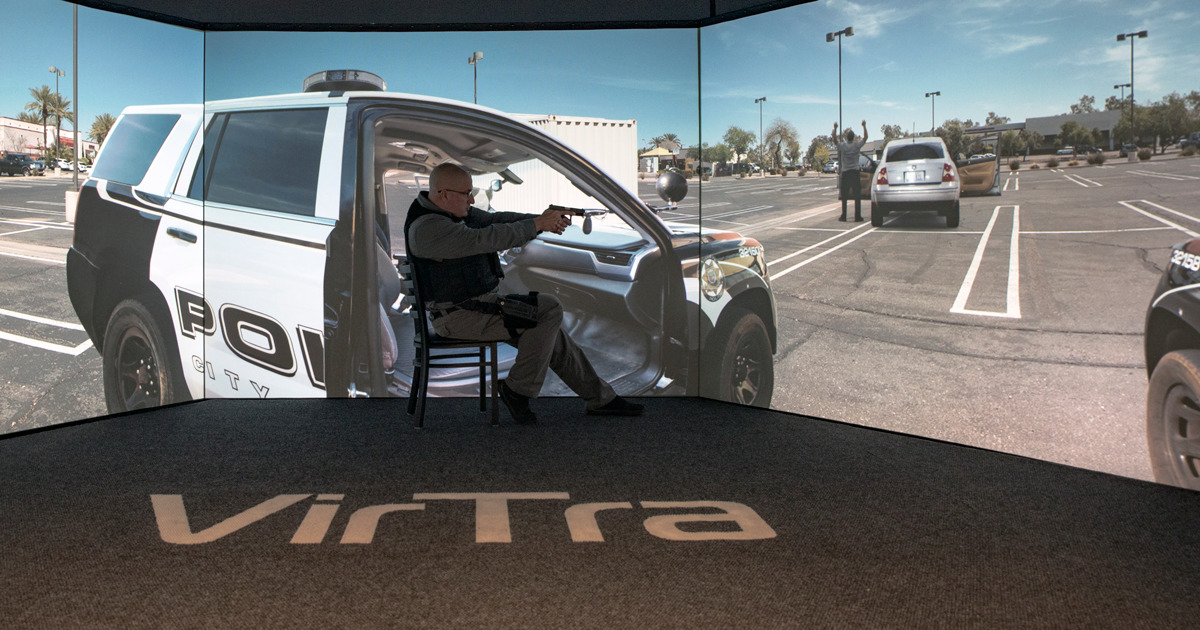
In order to maximize law enforcement use of force simulation training, trainers must create an environment that is both three-dimensional and realistic. Simulators like the V-300® provide an excellent way for students to experience situations not possible through roleplaying or classroom training and are greatly benefitted by the addition of props.
A way to take simulation training to the next level is with the addition of props in a simulated scenario, the new environment makes the on-screen situation more realistic, thus adding a deeper level to the student’s training.
When using props in conjunction with simulators, there are a few things to keep in mind:
Use Relevant and Visually Accurate Props
All props should be convincing and believable. Oftentimes, trainers use simple objects like chairs or desks to represent trees and mailboxes. But imagine how much more a student would benefit if there were a realistic representation. To keep the simulation as lifelike as possible, each prop introduced into the scenario should fit the situation.
Portable, Yet Durable and Cost Effective
If props become burdensome, they will be used less often, or not at all. Keep your props simple, light and easy to manage so they will be used as intended and in more simulations.
Enhance and Support Your Training
Effective use of force simulation training needs to teach cover and concealment (and the difference between the two). Moving off the X and utilizing resources within the operational area is another important training point. This adds another level of possibilities and challenges for the student as it requires the ability to quickly assess the environment before making decisions.
How to Successfully Incorporate Props in Your Simulator Training Environment
Relevant props can be portable and cost-effective while fitting into the scenario. It offers a way to teach trainees how to cover and conceal while tactically working within the simulation, which is best paired with the V-Threat-Fire®.
Below is an example of irrelevant three-dimensional props in a scene. Clearly, a fire hydrant and wooden log would not be appropriate in a kitchen. The use of furniture or other household items would be more believable, thus keeping the student immersed in the simulation.

Trainers can acquire props to be used in a simulator through local prop companies, or by making the props themselves. Props can be made out of wood, cardboard or other readily available materials. They can be custom-made to fit the department’s needs.
Props are an excellent way to enhance simulator training through a three-dimensional effect. If you need help finding the best ways to train realistically, VirTra can help. Contact us for more information.
Recently Published
Join Our Newsletter








